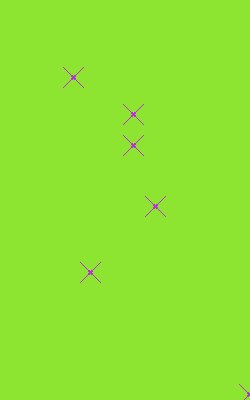[I just saw this lying about in my drafts folder. I figure I’d backdate it and stick it up, even though it’s not finished (I have no current intention of finishing it nor desire to do so)].
Introduction
Schoenberg always envisioned modulation as a four-part process
1) You establish what key you’re going to be leaving.
2) You use only notes common to both, so as to neutralize the old tonality.
3) You enter your new key.
4) You cadence in your new key.
There is a paper by D. Muzzulini [1] which attempts to give a mathematical refinement of this model, claiming still that it agrees with Schoenberg’s original conception in all of the examples in his book [2].
His refinement involves what notes of the new scale you are allowed to use in stage 3. I will define a slightly dumbed-down version of it in the first section, and then try to fit it within a much weaker framework involving iterated transformations which seems to me to be somehow more intrinsically musical, though I do not pretend that the ideas herein are either a) original or b) have any historical justifications. I will finish up by saying in what way a weakened version of Mazzola’s system can be situated within this framework.
Now down to business.
Mazzola’s Model
Recipe:
Two scales, S and T say, that differ by a translation.
A translation/inversion f that maps S bijectively onto T.
A cadential set* c of S
*a cadential set for S is some minimal subset that is in only S and no other scale related to S by translation.
The quantum Q, if any one exists, is defined as being the minimal set with the following requirements:
A) f:Q→Q bijectively.
B) c⊂Q.
C) Q∩T has no translational/inversional symmetries.
D) Every note of Q∩T is harmonizable with some chord in Q∩T.
The of this is that the notes that we can use in stage 3 are, according to him, give by the set Q∩T.
His evidence for this approach is that, according to him Schoenberg many, many examples of modulations, given in [3], all conform to his approach. Of course, Schoenberg never talks about modulation in this way, doing in mainly be considerations of voice leading – certainly never being too interested in T/I transformations between scale types. And he doesn’t make any efforts to musically justify his axioms, so boo-urns to him for that.
An Iterated Transformation Model
Now, in this model, I’m going to leave the manner of establishing the old and the new key out; the parts of the modulation I’m interested in will look like
1) You’re in your old key
2) You use only notes common to both, so as to neutralize the old tonality.
3) You’re in your new key.
Essentially, all I’m going to do is choose some translation f, and some subset of notes Q of S such that under repeated applications off Q goes through each of the stages above.
Say we have that Q is in S, f(Q) is in S∩T, and ff(Q) is in T. There are few different ways of using this to modulate. We could just take these to be background scales which we might restrict ourselves to the images of Q, using them as chords or scales to which we are temporarily constrained in moving (Ex. 1) or, more strongly; we could have some melody/pattern played initially in Q, and then apply the transformation to this pattern until we end up in our new key (Ex. 2); or we could just play Q and its transpositions as block chords directly (Ex. 3), or in various inversions (Ex. 4).
General Iterated Transformation Structures
So I can see a few differen other ways that one might be able to do the same sort of stuff. If you can get the first few images of Q to be in the initial key, so that you can emphasize the transposition pattern enough, you might want to skip the transition phase giving a 2-phase transition (Ex. 5), or break out of the two scales entirely (Ex. 6, 7).
I’d call the last situation an extrinsic transport between two tonalities, as opposed to the original idea, in which the transport was somehow intrinsic to the two scales.
More saliently for Muzzulini’s theory, it might make sense, if there aren’t too many notes missing from S or T, to restrict one’s self to working (maybe once one has entered the neutral phase) with the intersection of the images with T (Ex 8).
[
here I sort of trailed off … here were the things I told myself I would have added had I finished this properly:
3-phase modulation
intrinsic/extrinsic/hybrid modulation
EXAMPLES!
Code!
]
——————
[1] Mazzola G. et al., The Topos of Music, Birkhaueser 2002
[2] Muzzulini D., Musical Modulation by Symmetries. Journal for Music Theory 1995
[3] Schoenberg A., Harmonielehre (1911). Universal Edition, Wien 1966.
